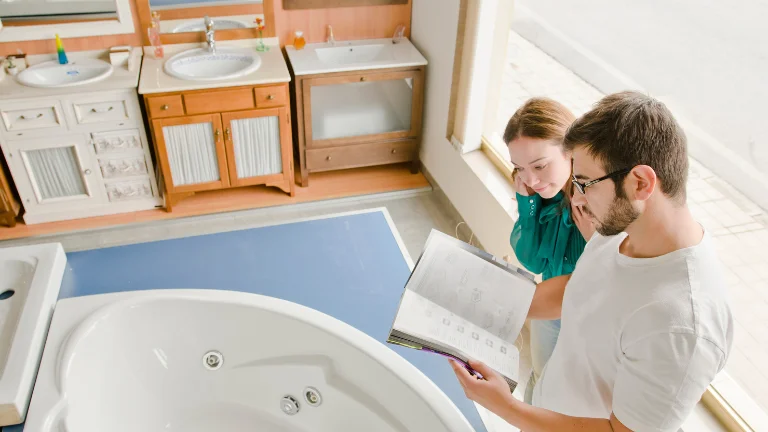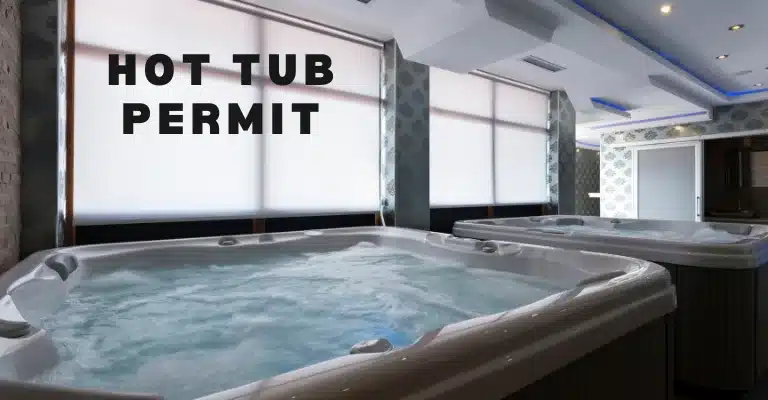Hot Tub Base Pad: Protect Your Spa Fast Without Concrete
Maximize the lifespan of your hot tub with a durable, efficient hot tub base pad. Shop our range of high quality options today – perfect for indoor and outdoor use.
A hot tub pad is a layer of material that sits underneath the hot tub and serves as a foundation. The base pad is an essential component of a hot tub installation because it provides a stable and level surface for the hot tub, which helps to prevent damage to the hot tub and ensures a safe and enjoyable experience.
Why a Hot Tub Base Pad Matters
Let me tell you—if you’re thinking of setting up a hot tub, don’t just plop it down in the backyard and call it a day. The base pad might not be the flashiest part of the setup, but it definitely pulls its weight (literally and figuratively).
The Pad Keeps Everything Steady
A full hot tub, with water and a few people soaking, can weigh well over 5,000 pounds. That’s like parking an SUV on your lawn. Without a proper base, that weight can cause the ground to shift, the tub to tilt, or even crack over time. It’s not just about stability, it’s about protecting your investment.
And yeah, I’ve seen what happens when someone skips the pad. A buddy of mine thought his deck was strong enough. Fast forward three months, and the thing was leaning like the Tower of Pisa. He had to drain it, level it again, and cough up $300 to fix the damage. Not exactly a relaxing spa day.
What Can Go Wrong Without One?
Here’s the deal—when you don’t use a hot tub pad, these are the headaches you’re likely to run into:
- One side sinks after a few weeks, and now your jets don’t shoot where they should
- Water starts pooling underneath, which can lead to rot or mildew
- The ground shifts, which can pull on the plumbing or wiring
- You might end up calling in someone to relevel it—again
| Issue | What It Causes | Possible Cost |
|---|---|---|
| Uneven foundation | Stress cracks, loose fittings | $200–$500 fix |
| Water underneath | Mold, rust, insulation damage | Time + cleaning |
| Just setting it on grass | Bugs, sagging, messy long-term use | Total reset needed |
It’s one of those things that doesn’t feel urgent… until it is. And by then, it’s usually a weekend project you didn’t plan for.
Look, a solid base pad keeps your tub level, dry, and off the dirt. It also makes future maintenance easier. Think of it like the difference between setting a tent on gravel versus a tarp—one keeps things comfy, the other becomes a hassle.
If you’re spending thousands on a hot tub, it’s worth the extra $100 or so for a proper base. It’s not just about peace of mind—it’s about not kicking yourself later.
7 Hot Tub Base Pads: Which One’s Right for You?
1. Concrete Pads – The OG of hot tub bases. If you want something rock-solid that’ll outlast your tub, concrete’s your best bet. But fair warning: it’s not a DIY weekend project unless you’ve got serious skills (or a buddy who does). Pricey? Yeah. Worth it? Absolutely.
2. Paver Pads – These give you that nice, level surface without the permanence of concrete. They’re easier to install, but over time, they might shift around a bit—kind of like that one wobbly patio stone you’re always tripping over. Not a dealbreaker, just something to keep in mind.
3. Gravel Pads – Cheap, simple, and gets the job done. Perfect if you’re on a tight budget or need a quick fix. But don’t expect it to stay perfectly level forever, especially if you’ve got kids or pets digging around in it.
4. Wooden Deck Bases – Got a sturdy deck? You might be able to plop your tub right on it. Keyword: might. Make sure that deck can handle the weight (water’s heavy, folks), and anchor that tub down unless you want a very expensive slip-and-slide.
5. Foam Pads – Lightweight, easy to toss down, and great for insulation. But let’s be real, they’re basically the yoga mats of hot tub bases. Fine for a while, but don’t expect them to hold up forever, especially if you live somewhere with wild weather.
6. Rubber Pads – These recycled rubber mats are great at soaking up vibrations (good news if your hot tub sounds like a jet engine). Durability’s a bit hit or miss, though, and they’re not ideal for every setup.
7. Plastic Pads – Light, easy to handle, and decent at keeping heat in. But like foam, they’re not exactly built for the long haul. If you’re okay with replacing them every few years, they’re a solid short-term option.
So, which one’s best?
- Most durable? Concrete or pavers, hands down.
- Easiest install? Gravel, foam, or plastic, great for DIYers.
- Best for decks? Only if your deck’s built like a tank.
At the end of the day, it comes down to your budget, how permanent you want it, and how much work you’re willing to put in. Just don’t skip this step, nobody wants their dream hot tub sinking into the mud like a sad, bubbly pancake.
Hot Tub Base Pad Installation Guide
Picking the right base is only half the battle—you’ve gotta install it right. Here’s how to do it without ending up with a lopsided tub.
Concrete Pad (Most durable, but needs pro help)
- Mark & clear the area.
- Dig 6″ deep, add gravel for drainage.
- Pour concrete, level it, and set the pad.
- Let cure completely before placing the tub.
Paver Pad (Sturdy but can shift over time)
- Mark & clear the spot.
- Dig 6″ deep, layer gravel and sand, then compact.
- Set pavers, tap into place with a mallet.
- Fill gaps with sand, let settle before use.
Gravel Pad (Cheap & easy, but high maintenance)
- Mark & clear the area.
- Dig 6″ deep, lay landscape fabric to block weeds.
- Add gravel, compact, repeat until level.
- Place tub, check for stability.
Wooden Deck Base (Great for decks, but check weight limits!)
- Reinforce deck with pressure-treated lumber.
- Cover with plywood, seal with waterproofing.
- Ensure level, then set the tub.
Foam Pad (Quick setup, but not long-lasting)
- Clear & level the ground.
- Unroll foam pad, position under tub.
Hot Tub Base Pad Comparison
| Type | Pros | Cons |
|---|---|---|
| Concrete | Super sturdy, long-lasting | Expensive, needs pro install |
| Pavers | Customizable, looks nice | Can shift, tricky to level |
| Gravel | Cheap, good drainage | Needs frequent leveling |
| Wood Deck | Seamless look, good airflow | High maintenance, not as durable |
| Foam | Lightweight, easy install | Wears out fast |
| Rubber | Non-slip, absorbs vibration | May move over time |
| Plastic | Light, decent insulation | Not great in cold climates |
Bottom line?
- Want it to last? Concrete or pavers.
- On a budget? Gravel or foam.
- Putting it on a deck? Double-check weight limits!
Pick what fits your needs, and happy soaking! 🛁
Benefits of using a hot tub base pad
A good base pad isn’t just extra work—it’s a must for keeping your hot tub safe, efficient, and long-lasting. Here’s why:
✅ Stable & Level Surface – Prevents uneven weight distribution, which can wreck your tub’s plumbing and structure.
✅ Protects from Damage – Keeps moisture, dirt, and debris from wearing down the underside.
✅ Better Insulation – Some pads reduce heat loss, saving energy and money.
✅ Longer Lifespan – A solid foundation means fewer repairs and replacements.
✅ Cleaner Look – Makes your setup look intentional, not just plopped on the ground.
For more about Best Ground For Hot Tub (How To Build A Gravel Base For Hot Tub)

Hot Tub Base Pad Ideas & Creative Uses for Wooden Bases
A good base pad protects your investment—and with a wooden one, you get function and style.
Why Use a Base Pad?
- Better insulation – Keeps water hotter longer
- Weather & pest protection – Shields your tub from damage
- Extra comfort – Adds cushioning underfoot
- Longer lifespan – Prevents wear and tear
Pick the Right One:
✔ Consider your climate
✔ Choose durable, easy-clean materials
Creative Ways to Use a Wooden Hot Tub Base
1️⃣ Yard Decor – Turn it into a rustic focal point in your outdoor space.
2️⃣ Storage Solution – Organize towels, chemicals, or accessories inside.
3️⃣ Planter Box – Grow herbs or flowers for a charming garden feature.
4️⃣ Bug-Free Zone – Helps keep debris and pests away from your tub.
Pro Tip: If you’re not using it for the tub, repurpose it as a stylish raised garden bed or outdoor bench base!
Choosing the Right Type for Your Base Pad
Choosing the Right Hot Tub Base Pad
Match your base pad to your tub’s size, location, and your personal style—so it works well and looks good doing it.
Material Matters
- Vinyl Pads → Great for soft surfaces, but cover them to prevent tears from debris.
- Ceramic Tile Pads → Durable and stylish—no extra cover needed.
- Wood/Concrete Pads → Best if your tub sits on wood or concrete surfaces.
Location, Location, Location
✔ Outdoors? Go for weather-resistant materials like concrete, pavers, or rubber.
✔ Indoors? Ceramic tile or vinyl can blend seamlessly with your flooring.
✔ On a deck? Reinforced wood bases work best—just make sure it can handle the weight!
Quick Tips
- Small hot tub? Vinyl works but needs protection.
- Heavy-duty use? Concrete or tile won’t let you down.
- Want style + function? Ceramic tile pads look sleek indoors, while stone pavers add charm outdoors.
Here’s a clearer, more organized breakdown of the Hot Tub Foundation Kit:
Hot Tub Foundation Kit – What’s Included
This all-in-one kit provides the essentials to build a sturdy, functional hot tub base and plumbing system.
Materials Included:
✅ Base Construction
- 2x Concrete blocks (3’x3’x3/16″ thick)
- 1x Polyethylene sheeting (8’x8′ + 6’x6′, 1/4″ thick) – for moisture barrier and insulation
✅ Plumbing Components
- 1x PVC pipe + fittings (1-1/4″, 6′ length)
- Tubing + fittings for water lines (2″-4″ diameter)
- 2x 3-way valves with pressure gauges (15 PSI max rating)
✅ Extras Needed (Not Included)
- Garden hose with shutoff valve (or use the included in-line shutoff valve for direct connection)
Key Notes:
⚠️ Water Pressure Requirement:
- The valves only work if your water pressure exceeds 15 PSI.
- For low-pressure systems, use an adapter (not included).
🔧 Installation Tips:
- Secure the base with stakes/clamps to prevent shifting.
- Use the polyethylene sheets as a moisture barrier under the tub.
- Connect plumbing via garden hose or the in-line shutoff valve.
Why Choose This Kit?
- All-in-one convenience – No hunting for separate parts.
- Durable foundation – Concrete blocks + polyethylene protect against ground moisture.
- Flexible plumbing – Works with standard garden hoses or direct hookups.
Perfect for DIYers who want a hassle-free start to their hot tub setup!
Questions? Double-check your water pressure before installing to ensure compatibility. 🚿💦
Hot Tub Base Pad Guide: Installation, Renewal & Maintenance
Installation Tips by Material
- Wood Base Pads:
- Focus on alignment (minor leveling issues are okay).
- Secure with pressure-treated lumber for longevity.
- Concrete/Stone Pads:
- Must be perfectly level—no room for error.
- Use a gravel base for drainage before pouring.
- Foam/Rubber Pads:
- Lay on flat, debris-free ground.
- Trim edges if needed for a snug fit.
Renewing an Old Base Pad
♻️ Options:
- Replace with identical pad – Cheapest/easiest fix.
- Add a cushion topper – For minor wear (e.g., EVA foam).
- Resurface concrete pads – Patch cracks or apply a sealant.
Pro Tip: Before renewing, clean thoroughly (see below) to prevent mold under new layers.
Maintenance Checklist
- Clean Every 3–6 Months:
- Scrub with warm water + mild soap.
- Use a soft brush for crevices (an old toothbrush works!).
- Dry completely before reuse.
- Prevent Mold/Mildew:
- Apply hot tub-safe water treatment annually.
- Trim excess plastic to avoid moisture traps.
- Avoid Contamination:
- Keep tools/chemicals 50+ feet from the tub.
- Never condition areas that touch the tub/filter.
Cleaning Other Hot Tub Parts
- Filtration Pads:
- Soak in soapy water, rinse, and air-dry fully.
- Replace if frayed or discolored.
- Old Covers:
- Wash with vinyl cleaner + soft brush.
- Treat with UV protectant to prevent cracking.
Bonus: For grimy pads, a 50/50 vinegar-water spray helps dissolve buildup without harsh chemicals.
Final Advice
- Concrete/stone pads? Check for cracks yearly.
- Foam/rubber pads? Replace every 3–5 years.
- Always follow your pad’s manufacturer guidelines.
A little upkeep goes a long way—your hot tub (and back muscles) will thank you! 🛁✨
🔍 Want more info? Head over to Hot Tub Patio 🛁 or check our Guides 📖 for extra reading!











One Comment